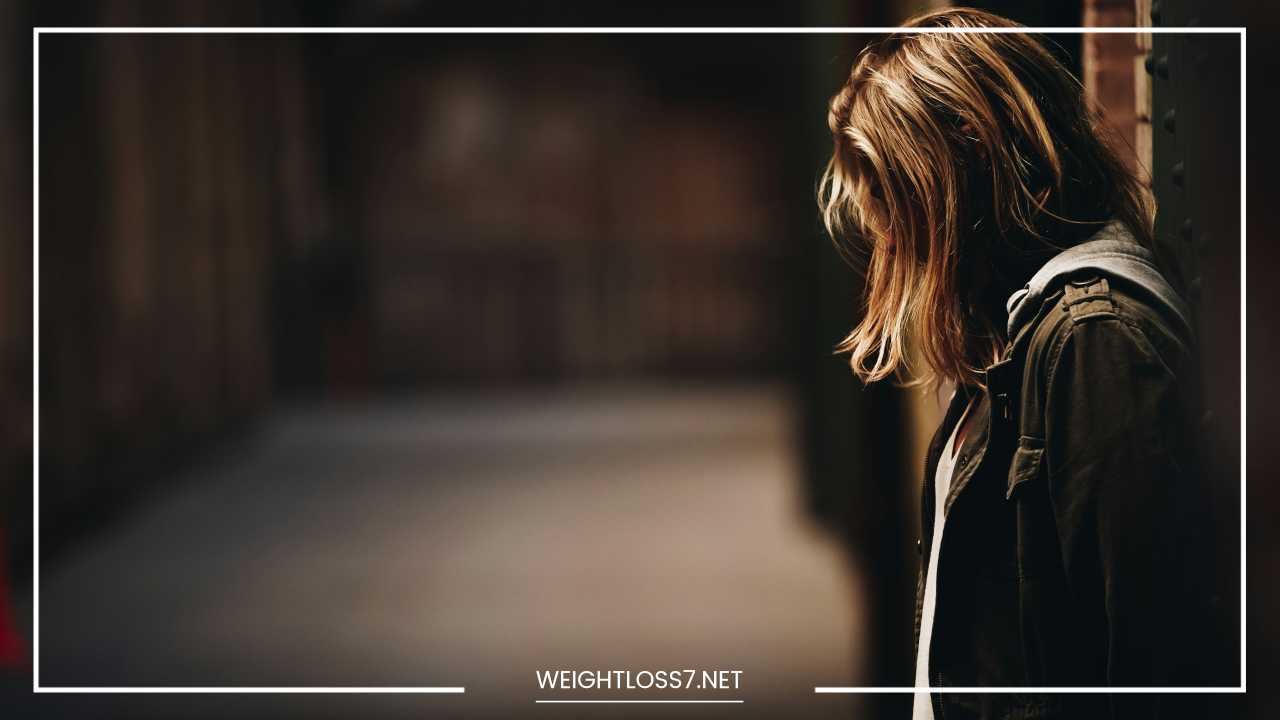Mental Issues After a Physical Attack

Mental Issues
Shattered But Not Broken: Healing the Mental Wounds After a Physical Attack
A physical attack is a brutal violation. It’s more than just physical wounds; it’s a savage assault on your sense of safety and security.
The world you knew, the one where you felt confident and in control, can shatter in an instant. In the aftermath, you might be left feeling confused, isolated, and overwhelmed by a storm of emotions.
It’s important to understand that these struggles are entirely normal. You’ve been through a traumatic event, and your mind and body are reacting in ways designed to protect you.
This post delves into the common mental health issues that can arise after a physical attack, explores coping mechanisms, and offers resources to guide you on the path to healing. But most importantly, it serves as a reminder: you are not alone.
The Invisible Scars: Common Mental Health Issues
The impact of a physical attack goes far beyond the physical. The emotional and psychological wounds can be just as deep, if not deeper. Here’s a closer look at some of the most common mental health battles you might face:
- Post-Traumatic Stress Disorder (PTSD): This is a complex condition that can develop after experiencing a terrifying event. Flashbacks, intrusive thoughts, nightmares, and hypervigilance (being constantly on edge) are all hallmark symptoms of PTSD. These symptoms can be debilitating and make it difficult to function in daily life.
- Anxiety: The constant feeling of being on guard can morph into chronic anxiety. You might experience racing thoughts, difficulty concentrating, and physical symptoms like a racing heart, shortness of breath, and muscle tension.
- Depression: The emotional toll of the attack can lead to feelings of sadness, hopelessness, and a loss of interest in activities you once enjoyed. These are all symptoms of depression, which can be a significant hurdle on your healing journey.
- Anger: It’s entirely normal to feel angry after being attacked. This anger can be a powerful motivator to seek justice and reclaim your sense of control. However, it’s crucial to find healthy ways to express this anger, as letting it control you can be destructive.
- Guilt or Shame: You may find yourself replaying the events in your head, searching for something you could have done differently. This can lead to feelings of guilt or shame, even though the attack was not your fault.
- Social Isolation: The experience may make you feel vulnerable and distrustful, leading you to withdraw from friends and family. Social isolation can worsen anxiety and depression, making it even harder to cope.
- Difficulty Trusting Others: The betrayal of the attack can make it hard to trust people again, even those close to you. Building trust takes time and requires consistent positive experiences.
Remember, the severity and combination of symptoms will vary from person to person. There is no right or wrong way to feel.
However, if your symptoms are severe or interfere with your daily life for more than a few weeks, seeking professional help is crucial.
Taking Back Control: Strategies for Healing
The road to healing after a physical attack is a personal journey. There’s no one-size-fits-all approach, but here are some strategies that can help you regain a sense of control and move forward:
- Seek Professional Help: A therapist can be a powerful ally in your healing journey. They can provide a safe space for you to process your trauma, develop healthy coping mechanisms, and learn to manage your emotions.
- Talk to Someone You Trust: Sharing your experience can be incredibly cathartic. Talking to a trusted friend, family member, or therapist can help you feel less alone and gain a different perspective on the situation.
- Join a Support Group: Connecting with others who have been through similar experiences can provide invaluable support and understanding. Sharing your struggles and hearing success stories from survivors can be a powerful motivator.
- Prioritize Self-Care: Taking care of yourself physically and mentally is critical for healing. This includes getting enough sleep, eating a healthy diet, exercising regularly, and practicing relaxation techniques such as yoga, meditation, or deep breathing.
- Create a Safety Plan: Identify triggers that evoke memories of the attack and develop strategies to cope with them. Consider personal safety measures that make you feel more secure in your environment.
- Challenge Negative Thoughts: Trauma can lead to negative self-talk. Learn to recognize these thought patterns and challenge them with positive affirmations.
- Celebrate Small Victories: Healing is a process, not an event. Acknowledge your progress, no matter how small. Every day you choose to move forward is a victory.
Beyond Therapy: Additional Resources for Survivors
While therapy is a crucial element of healing, there are many additional resources available to support you after a physical attack:
- Reporting the Attack: Reporting the crime to the police is an important step in holding the perpetrator accountable and regaining a sense of control. Law enforcement can also provide information about victim support services and safety resources.
- Legal Advocacy: Many organizations offer legal assistance to victims of crime. These advocates can help you navigate the legal system, understand your rights, and ensure you receive fair treatment.
- Safety in Public Places: Familiarize yourself with safety tips for public spaces, such as staying in well-lit areas, being aware of your surroundings, and trusting your instincts. Consider self-defense training to boost your confidence and equip yourself with basic skills.
- Empowerment Through Self-Defense: Learning basic self-defense techniques can empower you and increase your sense of security. Several organizations offer self-defense classes specifically designed for women and survivors of violence.
- The Power of Community: Connecting with your community can be a source of strength and support. Consider joining a local self-defense or women’s empowerment group to connect with like-minded individuals.
- Online Resources: There are numerous online resources available for survivors of physical attacks. These websites offer information on coping mechanisms, legal rights, safety tips, and support groups.
Finding Strength in Stories: The Resilience of Survivors
Healing from a physical attack is a long and arduous journey. There will be setbacks and moments of doubt. But it’s important to remember that you are not alone. Countless survivors have walked this path before you, and they have emerged stronger on the other side. Here are a few resources that showcase the resilience of the human spirit:
- Documentaries: Powerful documentaries like “The Hunting Ground” and “I Am Jane Doe” shed light on the experiences of sexual assault survivors and the fight for justice.
- Memoirs: Reading memoirs written by survivors can offer a sense of validation and hope. Books like “Educated” by Tara Westover and “Unbroken” by Laura Hillenbrand chronicle stories of overcoming incredible trauma.
- Online Communities: Online forums and social media groups specifically for survivors can provide a safe space to connect, share experiences, and offer encouragement to one another.
Remember, Healing is a Journey, Not a Destination
Healing from a physical attack is a marathon, not a sprint. There will be good days and bad days. Be patient with yourself and celebrate your progress, no matter how small.
With time, support, and a commitment to self-care, you can reclaim your sense of safety, rebuild your life, and emerge stronger than ever before.
Here are some additional points to consider including:
- The importance of self-compassion: Be kind to yourself throughout this process. Healing takes time, and there will be setbacks.
- The role of healthy relationships: Strong social connections are essential for emotional well-being. Nurture your relationships with supportive friends and family.
- The power of forgiveness: Forgiveness is not about condoning the attacker’s actions. It’s about releasing yourself from the burden of anger and resentment.
- Finding meaning and purpose: Helping others who have been through similar experiences can be a powerful way to find meaning and purpose after a traumatic event.
By sharing your story and advocating for others, you can become a beacon of hope and resilience for survivors everywhere. You are not broken; you are a survivor. Embrace your strength and take control of your healing journey.
Beyond Words: Embracing Creative Expression in Healing
While traditional therapy and support groups play a vital role in healing, there are additional avenues for processing trauma and reclaiming your voice. Exploring creative expression can be a powerful tool for survivors of physical attacks. Here’s why:
- A Safe Space for Emotions: Creative outlets like art, music, writing, or dance therapy can provide a safe and non-judgmental space to express the emotions that may be difficult to articulate verbally. The act of creating can be cathartic, allowing you to release bottled-up feelings in a healthy way.
- Reconnecting with Your Inner Self: Trauma can leave you feeling disconnected from your emotions and sense of self. Creative pursuits can help you reconnect with your inner world, explore your feelings, and rediscover your unique voice.
- Building Self-Confidence: Creating something beautiful from a place of pain can be incredibly empowering. The sense of accomplishment that comes with completing a creative project can boost your self-confidence and remind you of your inner strength.
- Finding Your Voice: Trauma can leave you feeling voiceless. Through creative expression, you can reclaim your voice and communicate your experience in a way that feels authentic to you.
- Sharing Your Story: Creative works can be powerful tools for raising awareness about violence and helping others who have been through similar experiences. Sharing your story through art, music, or writing can inspire hope and healing in others.
Exploring Different Avenues of Creative Expression:
There are no limitations when it comes to creative expression. Here are a few ideas to get you started:
- Art Therapy: Expressing yourself visually through painting, drawing, or sculpture can be a powerful way to process trauma. No prior artistic experience is necessary.
- Music Therapy: Music can evoke a wide range of emotions. Creating music, drumming, or simply listening to music you find calming can be a therapeutic experience.
- Journaling: Writing down your thoughts and feelings can be a cathartic way to release emotional baggage.
- Dance Therapy: Moving your body can be a powerful way to express emotions and release physical tension.
- Photography: Capturing images of things that bring you peace or beauty can be a grounding activity and a reminder of the good in the world.
Remember, There’s No “Right” Way to Heal
The most important thing is to find what works for you. Experiment with different creative outlets and see what resonates with you.
There’s no right or wrong way to express yourself. The goal is to find a way to connect with your inner self and facilitate healing on your own terms.
Building a Support System: Resources and Advocacy
Here are some resources to help you explore creative expression as part of your healing journey:
- The National Alliance on Mental Illness (NAMI) – Arts Programs: [NAMI national alliance on mental illness ON nami.org] offers information on art therapy programs and resources for survivors of violence.
- The American Art Therapy Association: [American Art Therapy Association ON American Art Therapy Association arttherapy.org] provides a directory of qualified art therapists in your area.
- The National Endowment for the Arts (NEA) – Art Therapy: [National Endowment for the Arts ON National Endowment for the Arts (.gov) arts.gov] offers information on the benefits of art therapy and resources for finding programs.
- The National Sexual Violence Resource Center (NSVRC) – Healing: [NSVRC National Sexual Violence Resource Center ON National Sexual Violence Resource Center nsvrc.org] provides resources for survivors of sexual violence, including information on creative expression as a healing tool.
The Power of Advocacy: Using Your Voice to Make a Difference
Healing from a physical attack is a personal journey, but it can also be a catalyst for positive change. By sharing your story and advocating for others, you can use your experience to make a difference in the world. Here are some ways to get involved:
- Become an advocate for survivors’ rights.
- Volunteer with organizations that support victims of violence.
- Speak out about the importance of safety and prevention.
- Support legislation that protects survivors.
Remember, Your Strength is Your Story
A physical attack may have left scars, but it does not define you. You are a survivor, and your story is one of courage, resilience, and the unwavering human spirit.
Embrace your journey, explore creative expression, and use your voice to advocate for change. With time, support, and a commitment to healing, you can reclaim your life and emerge stronger than ever before.

















